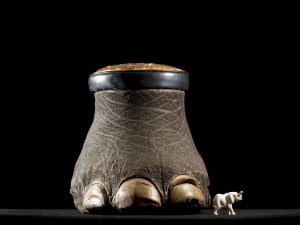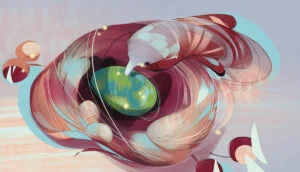The Blue dart poison frog is one of 18 species of frogs that will be part of the exhibit. (Photo: John Netherton)
Some of the more well-known species that will call Ottawa home for the next few months include an African bullfrog named Jabba, Chinese gliding frogs, ornate horned frogs and dart poison frogs.
The bright-green Chinese gliding frog looks similar to an American green tree frog but with one distinct difference: it can fly … sort of.
“They have webbing in between their toes, so when they jump they can glide a little bit, which helps them get around,” says Lesley Thompson, senior zookeeper for Reptile Land.
These tiny green frogs also have sticky toe pads that allow them to climb trees with ease and jump from branch to branch, something that comes in handy when looking for food or trying to avoid predators.
Standing — or rather sitting — in stark contrast to the nimble gliding frog is the rotund African bullfrog, which can grow to almost the size of a small dessert plate and weigh about one kilogram.
“That guy could not climb a tree to save his life,” Thompson says with a laugh. “So instead of gliding from tree to tree this guy sits with his amazing camouflage until his meals come to him.”
Luckily for Jabba, food comes to each frog in the exhibit quite regularly — three times per day to be exact — and consists of a hardy meal of crickets or wingless fruit flies.
Some frogs, like the ornate horned frog, however, are perfectly adept at finding their own food. These brown, green, red and black animals are able to pounce on passing prey with remarkable speed and are known to eat mice, beetles, snakes and even other frogs.









